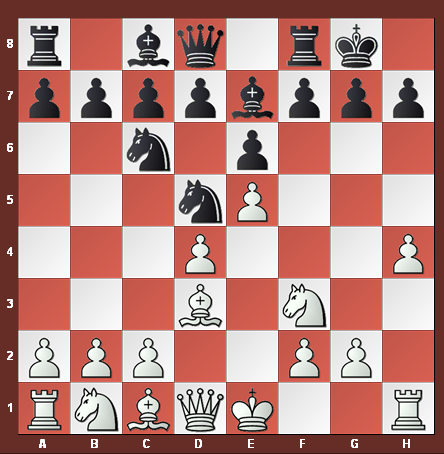Position of white pieces
Before considering the sacrifice of light squared white bishop, it has to be ensured that:
- the light squared white bishop is in the diagonal b1-h7 and there should not be any pieces hindering the movement of the bishop to h7 – if this is not fulfilled, there is no possibility for this attack at all in the first instance
- There is no necessity that the bishop should capture the pawn at h7 – I mean there is no compulsion that the pawn should be there in h7. It is not even a necessity that the bishop should give a check on the black King. In other words, the King may not be at g8 square in some occasional cases.
- the white knight should have been placed within the easy reach of the g5 square to give check on the black King when it captures the light-squared white bishop; in other words, the white knight should be either in f3 or h3 or in e4
- The White queen should be capable of reaching h5 square, if possible, or else should be able to move to the “h” file
Position of black pieces
The position of the black pieces should meet the following guidelines:
- Pieces should be there in the f7 and g7 squares. In most cases, it would be only the pawns; but in certain cases, the dark-squared black bishop might be In g7
- If the black queen and the rook occupy the d8 and f8 squares, then it would be ideal and the probability of attack on castled king sacrificing the bishop at h7 will be successful
- It has to be ensured that the Black Knight is not anywhere near the f6 square and cannot be moved to that square instantly.
- There should not be any threat for the b1-h7 diagonal from black’s Queen or light-squared bishop.
White has to ensure that the above conditions are completely met before embarking on this attack on the black King by sacrificing the light squared bishop.
Lastly one of the variations you might be interested in looking at with reference to following diagram seen in Part 1 of this series:

(White to move)
| 7. | Bxh7+ | Kh8 | |
| 8. | Ng5 | g6 | White needs to move Knight to open d1-h5 line. 8…g6 tries to prevent White’s 9.Qh5 |
| 9. | h5 | Bxg5 | Hoping for 10.Bxg5 Qxg5 11.hxg6 Nf4 |
| 10. | hxg6 | Nf4 | Trying to prevent 11.Qh5 |
| 11. | Bxf4 | Bxf4 | |
| 12. | Bg8+ | Kxg8 | 12… Kg7 gives same result |
| 13. | Qh5 | 1 – 0 | Checkmate on next move 14. Qh7# or 14.Qh8# depending on Black’s 13th move |


Trackbacks/Pingbacks